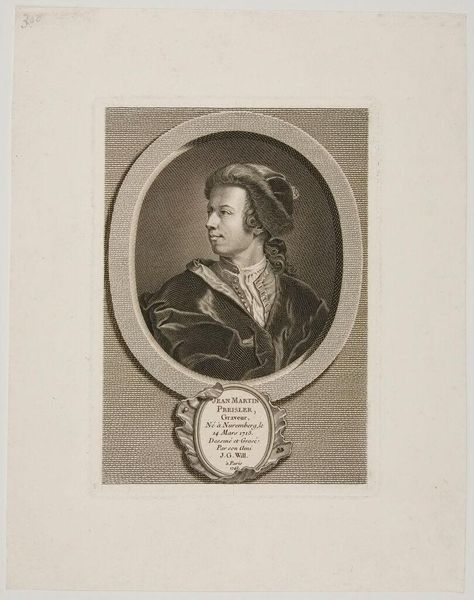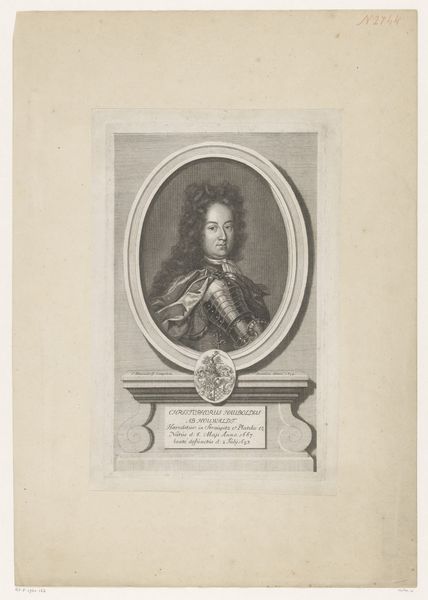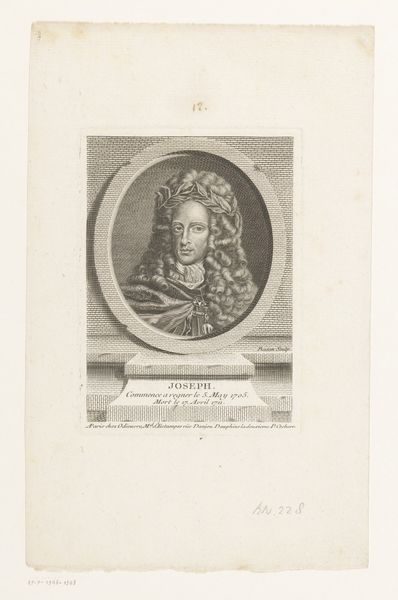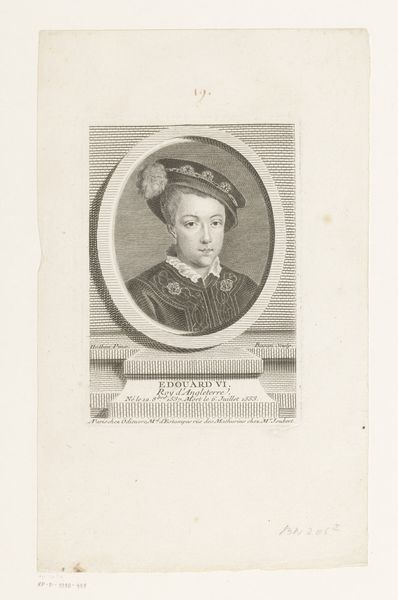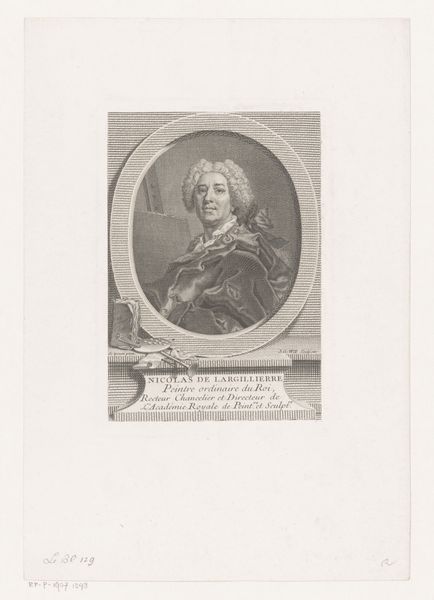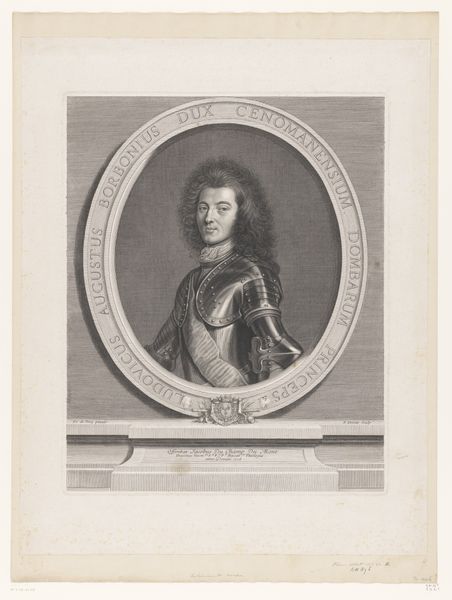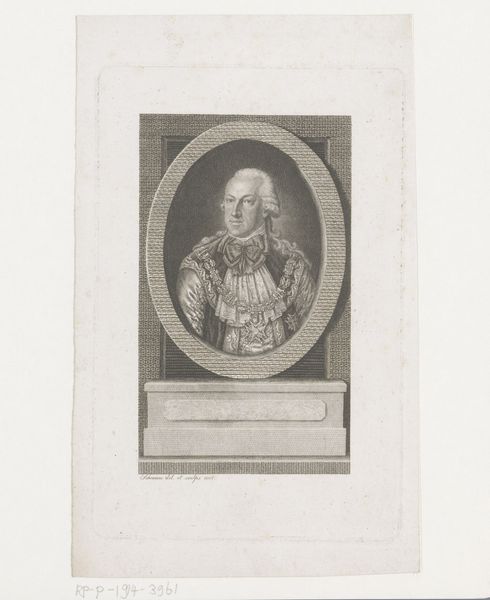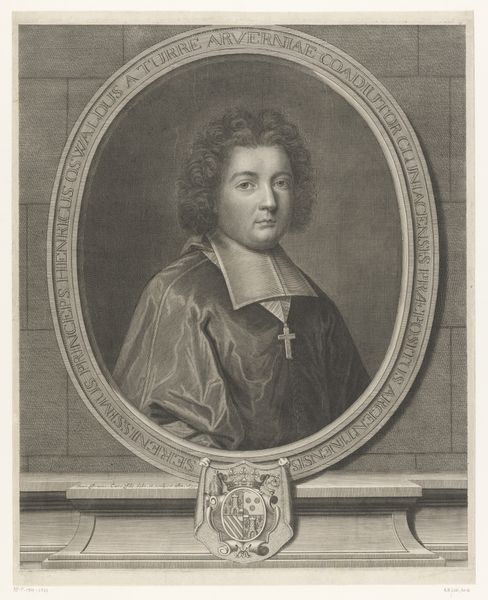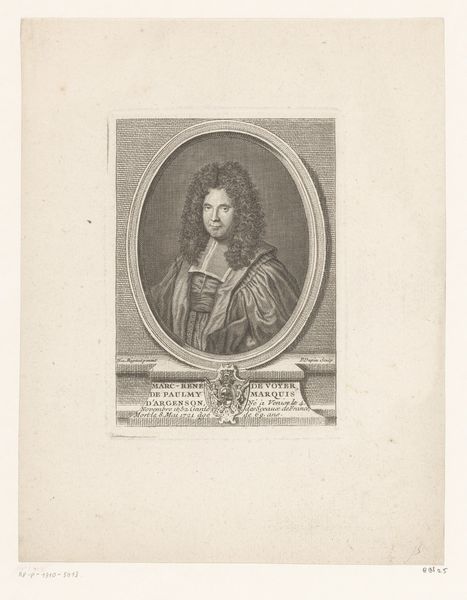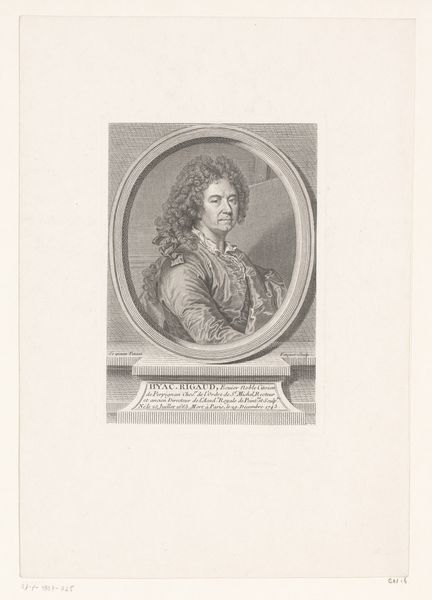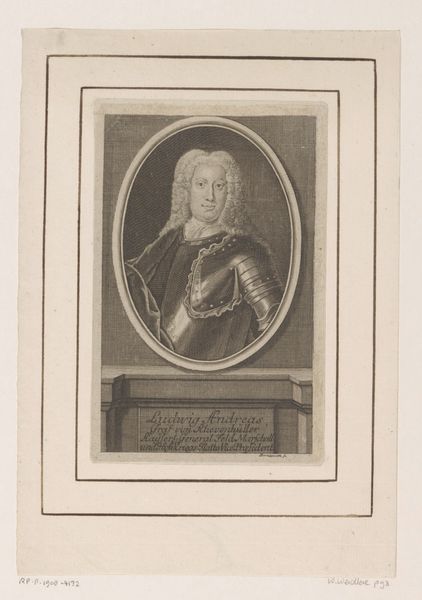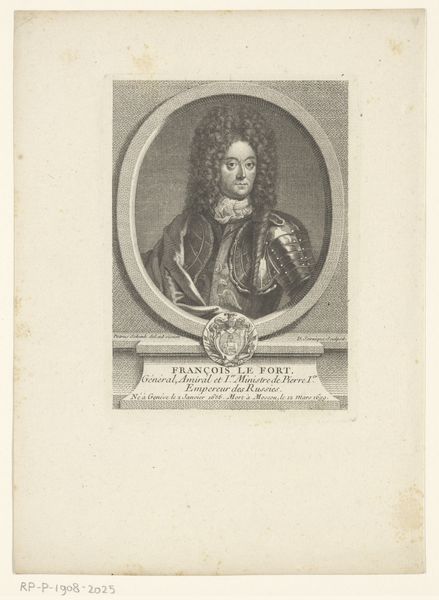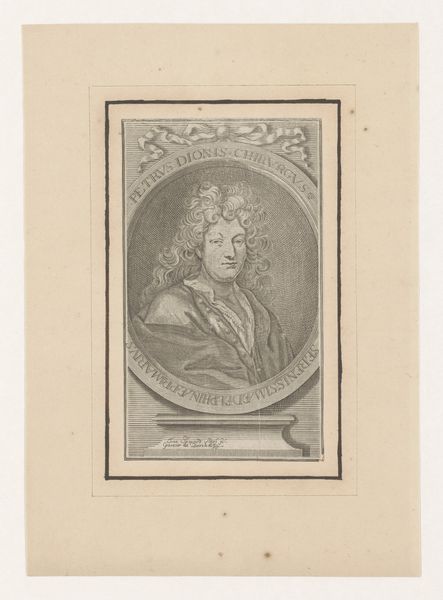
engraving
#
portrait
#
baroque
#
line
#
history-painting
#
engraving
Dimensions: height 192 mm, width 138 mm
Copyright: Rijks Museum: Open Domain
Curator: We’re looking at Johann Georg Wille's 1743 engraving, "Portret van Johann Martin Preissler," currently held in the Rijksmuseum. Editor: There’s an almost delicate precision to the lines that create a powerful sense of realism and a regal tone. The hatching work is meticulous, rendering a compelling portrait despite the limited grayscale. Curator: Indeed. Note how the composition utilizes the oval frame—both within and around the subject’s image. The way Wille exploits line variations builds incredible texture and dimension for an engraved image. Notice, too, how light and shadow model Preissler's face and garments. Editor: I’m intrigued by the setting of this image as an engraving; Preissler himself was also an engraver, which is part of a broad European network of artists at the time, yes? This image thus is a reflection and advertisement within a competitive creative market. Curator: Absolutely. It’s important to consider the stylistic choices Wille employs as well. Here the baroque aesthetic shapes the overall visual, informing the rich details, elegant adornments, and pronounced curvatures that define Preissler's clothing, frame and text. Editor: Which really serves a powerful social function too. Portraits such as these were part of consolidating power structures – visually reminding viewers of their status and significance. The portrait acts almost as a document reinforcing Preissler's established place within artistic and possibly even social circles. Curator: One cannot overstate the degree to which linear precision conveys details about his face and expression, lending him character, and making his person memorable through graphic art. It masterfully marries technical skill with artistic expression in every line and mark. Editor: Seeing this now allows me to understand 18th century engraving’s value as cultural objects. It really demonstrates that sometimes, it's not just art in a historical vacuum, but how socio-political dynamics can determine an artwork's relevance. Curator: Precisely, allowing for this deeper appreciation also reframes the way we perceive the artistry itself, doesn’t it?
Comments
No comments
Be the first to comment and join the conversation on the ultimate creative platform.
